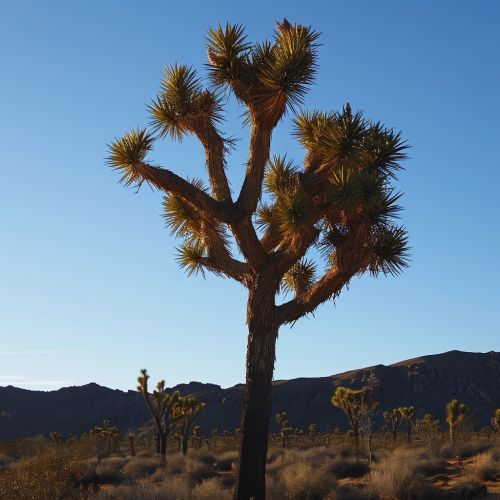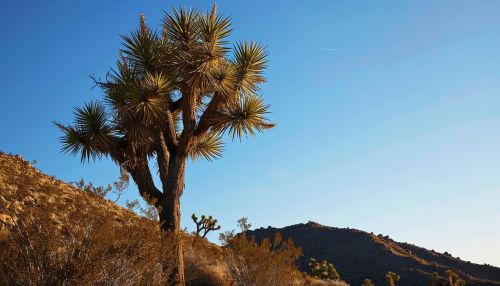Joshua Trees
Introduction
The Joshua tree (Yucca brevifolia) is a species of yucca, a type of flowering plant, that is native to the arid southwestern regions of the United States. This unique and iconic plant is characterized by its tall, spiky appearance and its ability to thrive in harsh desert conditions. The Joshua tree is a key component of the Mojave Desert's ecosystem, providing habitat and food for a variety of desert species.


Taxonomy and Naming
The Joshua tree is a member of the Agavoideae subfamily within the Asparagaceae family. It is one of about 50 species of yucca, a genus that also includes plants such as the Spanish bayonet (Yucca aloifolia) and the banana yucca (Yucca baccata). The scientific name of the Joshua tree, Yucca brevifolia, refers to its short, broad leaves. The common name "Joshua tree" is said to have been given by a group of Mormon settlers who crossed the Mojave Desert in the mid-19th century. The tree's unique shape reminded them of a Biblical story in which Joshua reaches his hands up to the sky in prayer.
Description
Joshua trees can grow up to 40 feet (12 meters) tall, though the average height is about 15 to 20 feet (4.5 to 6 meters). They have a deep and extensive root system that can reach up to 36 feet (11 meters) in depth, which allows them to access water stored deep in the ground. The tree's bark is rough and fibrous, providing some protection against the desert's intense heat and cold. The leaves are dark green, rigid, and sharply pointed, arranged in a spiral pattern around the ends of branches.
Distribution and Habitat
Joshua trees are endemic to the southwestern United States, specifically the Mojave Desert. They are found in California, Nevada, Utah, and Arizona, typically at elevations between 2,000 and 6,000 feet (600 to 1,800 meters). Joshua trees prefer sandy soils, but can also be found in areas with clay or rocky substrates. They are a defining feature of the Mojave Desert landscape, and their distribution is largely determined by the availability of groundwater.
Ecology
Joshua trees play a crucial role in the Mojave Desert ecosystem. They provide shelter and food for a variety of desert species, including birds, mammals, and insects. The trees are pollinated by the yucca moth, in a mutualistic relationship where the moth lays its eggs in the tree's flowers, and in return, the moth pollinates the flowers. The seeds of Joshua trees are dispersed by rodents such as the white-tailed antelope squirrel and the desert packrat.
Conservation
Although Joshua trees are not currently listed as endangered, they face several threats. Climate change is a major concern, as it could lead to a reduction in the tree's range and negatively impact its reproductive cycle. Invasive species, such as the red brome grass, also pose a threat by increasing the frequency and intensity of wildfires in the Mojave Desert. Conservation efforts are ongoing to protect and preserve Joshua trees and their habitat.
Cultural Significance
Joshua trees have long held cultural significance for various indigenous peoples of the Mojave Desert, who used the tree's leaves for weaving and its seeds for food. In more recent times, the tree has become a symbol of the American Southwest and is a popular subject in photography and visual art. The tree also lends its name to the Joshua Tree National Park, a popular destination for hiking, camping, and rock climbing.
